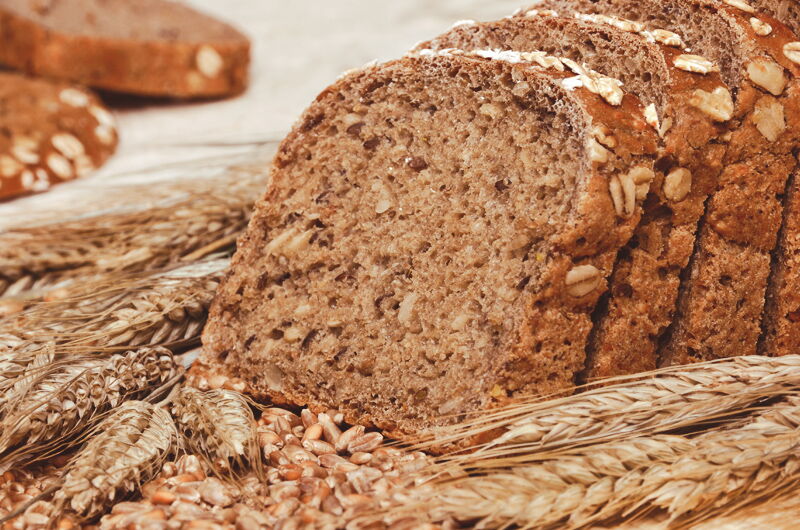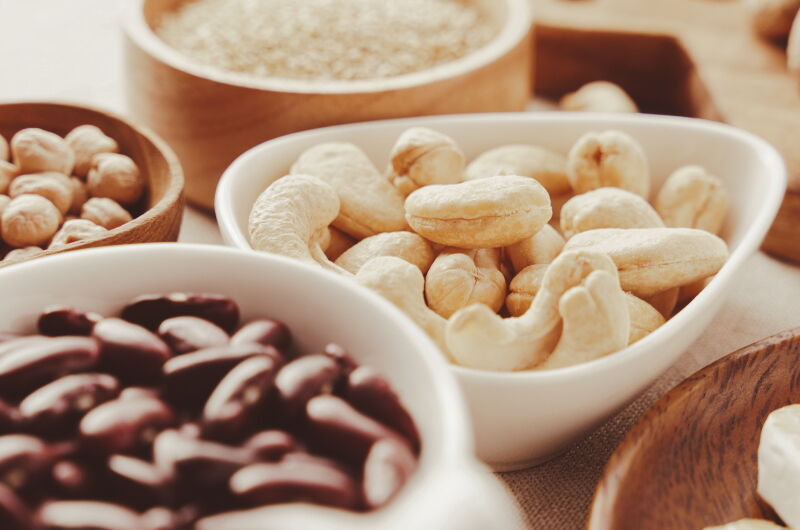Fiber is the structural part of plant foods, such as fruits, vegetables and grains, that our body cannot digest or break down. There are two types of Fibre: soluble and insoluble.
- Soluble fibre: dissolves in water to form a gummy gel. It can slow down the passage of food from the stomach to the intestines. Examples include dried beans, oats, barley, bananas, potatoes, and the soft parts of apples and pears.
- Insoluble fiber: Often referred to as "raw fiber" because it does not dissolve in water. It retains water, which helps produce softer, more voluminous stools to help regulate bowel movements. Examples include whole bran, whole grain products, nuts, corn, carrots, grapes, berries, and apple and pear peels.

International guidelines recommend consuming approximately 25-35 grams of total fiber per day, with 10-15 grams of soluble fiber or 14 grams of fiber per 1,000 calories. This can be achieved by choosing 6 ounces of grains (3 or more ounces from whole grains), 2 1/2 cups of vegetables, and 2 cups of fruit per day (based on a 2,000 calorie / day model). However, as we age, the need for fiber decreases. Per people over the age of 70, the recommendation for women is 21 grams and for men 30 grams of total fiber per day.
There are many beneficial effects associated with a correct consumption of fiber.
A high-fiber diet can normalize bowel movements, soften stools, and help maintain gut health. High-fiber foods can also help you feel full as they tend to be more filling than low-fiber foods.
Among the beneficial effects of the use of fiber in the diet is that linked with weight loss, as epidemiological studies tend to show, an association between fiber intake and reduced weight gain over time. Several mechanisms have been proposed to explain this effect, particularly for viscous Fibre, which are types of soluble Fibre with high viscosity that thicken when mixed with fluids. These include increased viscosity and subsequently reduced absorption rate and delayed gastric emptying and the promotion of intestinal hormones that increase satiety and fullness.
A high Fibre intake has been linked to a lower risk of heart disease in a number of large studies that have followed people for many years. In a Harvard University study of over 40,000 men, researchers found that high total Fibre intake was linked to a 40 percent lower risk of coronary heart disease.

Higher fiber intake has also been linked to a lower risk of metabolic syndrome, which we know increases the risk of developing heart disease and diabetes. These factors include hypertension, high insulin levels, excess weight (especially around the abdomen), high triglyceride levels, and low HDL (good) cholesterol levels. Several studies suggest that higher fiber intake may offer protective benefits from this syndrome.
Unfortunately, most people tend not to get the right amount of fiber.
Simple tips for increasing your daily fiber intake include:
- Eat breakfast cereals that contain barley, wheat, or oats.
- Switch to whole grain or multi-grain bread and brown rice.
- Add an extra vegetable to each evening meal.
- Snack on fruit, dried fruit, nuts, or whole-grain crackers.
A daily intake of more than 30g can be easily achieved if you eat:
- whole grain products;
- more fruit, vegetables and legumes;
- nuts or seeds instead of low-fiber cakes and cookies.
However, it should be remembered that a sudden switch from a low-fiber diet to a high-fiber diet could cause some abdominal problems including flutulence.

Furthermore, diets very high in fiber (more than 40g per day) are linked to a reduced absorption of some important minerals (such as iron, zinc and calcium). This occurs when the fiber binds these minerals and forms insoluble salts, which are then excreted. This could lead to an increased risk of developing deficiencies of these minerals in susceptible people.
As always, consult your doctor or nutritionist before making any drastic changes to your diet.
Bibliography
Du H, van der A DL, Boshuizen HC, Forouhi NG, Wareham NJ, Halkjaer J, Tjønneland A, Overvad K, Jakobsen MU, Boeing H, Buijsse B, Masala G, Palli D, Sørensen TI, Saris WH, Feskens EJ. Fibre and subsequent changes in body weight and waist circumference in European men and women. Am J Clin Nutr. 2010 Feb;91(2):329-36. doi: 10.3945/ajcn.2009.28191. Epub 2009 Dec 16. PMID: 20016015.
Dikeman CL, Fahey GC. Viscosity as related to Fibre: a review. Crit Rev Food Sci Nutr. 2006;46(8):649-63. doi: 10.1080/10408390500511862. PMID: 17092830.
Pereira MA, O’Reilly E, Augustsson K, et al. Fibre and risk of coronary heart disease: a pooled analysis of cohort studies. Arch Intern Med. 2004;164:370-6.
McKeown NM, Meigs JB, Liu S, Wilson PW, Jacques PF. Whole-grain intake is favorably associated with metabolic risk factors for type 2 diabetes and cardiovascular disease in the Framingham Offspring Study. Am J Clin Nutr. 2002;76:390-8.
